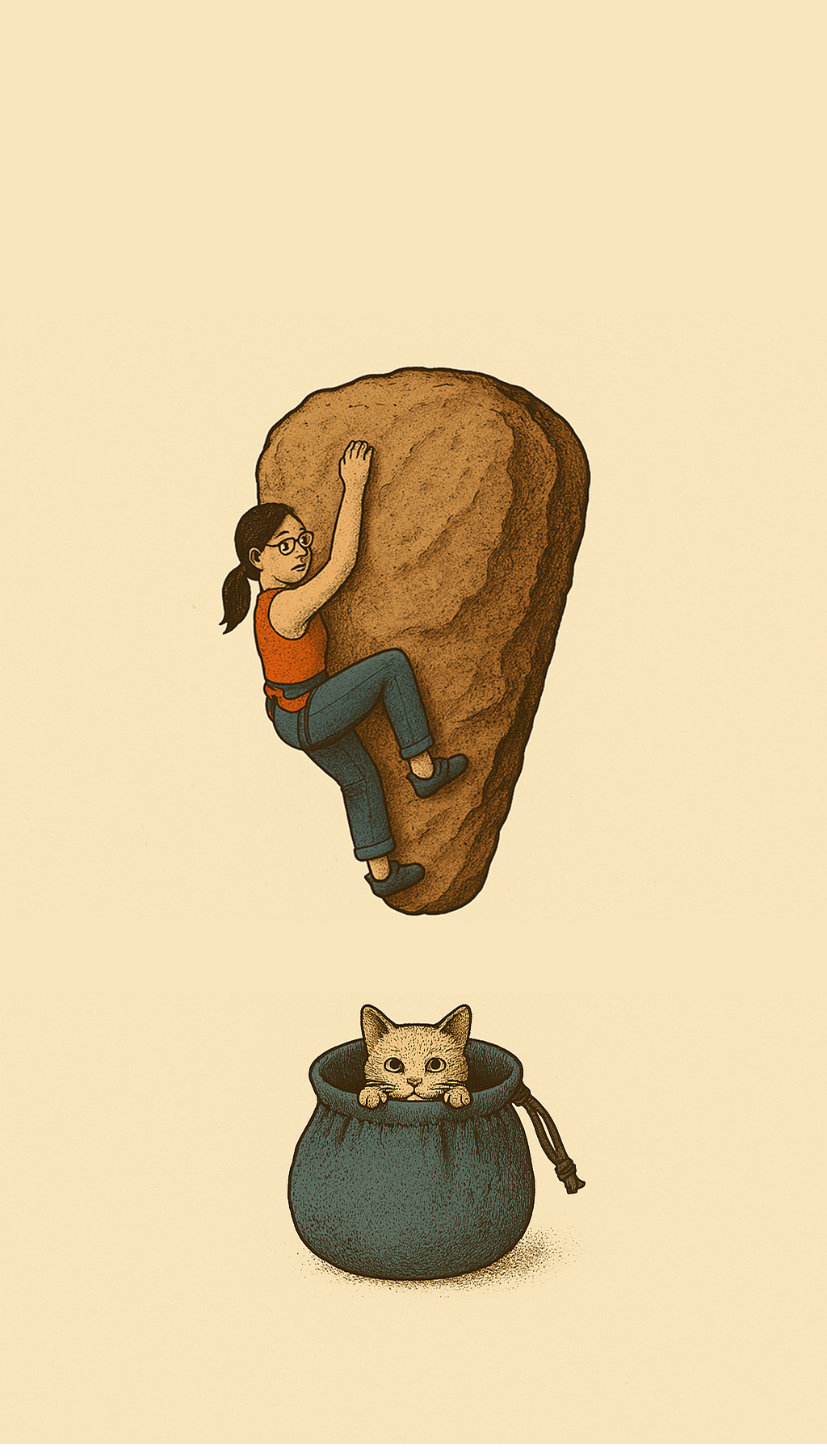Count Your Losses: A 1-Minute Experience to Transform Balance and Overgripping
“Pull harder. Chalk. Hangboards. Finger training. Crimp. Jug. Squeeze. Undercling.”
So much of climbing language is about hands. No surprise then that so many climbers struggle with cues like “trust your feet” or “stop overgripping.”
Why?
Because our very words lead us away from the truth:
Climbing is primarily a balance sport.
It’s our ability to sense and correct loss of balance that keeps us attached to the wall—far more than raw grip strength alone.
The Balance Paradox in Training
Climbers know balance matters. Just look at the gear in any gym:
Balance boards
Bosu balls
Wobble boards
Even homemade skate setups
But even our balance training is often performance-oriented:
Don’t fall = Success.
Fall = Failure.
This mindset subtly teaches us to tense up—even in the face, eyes, neck, tongue—using muscular force to avoid falling.
The result?
We reduce our sensitivity to micro-losses of balance. We build a subtle shame-bind around wobbling.
And in real climbing?
Every unnoticed shift in balance is exactly what triggers overgripping and upper body fatigue.
What If We Flipped the Script?
Imagine a simple, one-minute drill you can do anywhere, with nearly zero strain, that rewards noticing your loss of balance instead of punishing it.
What if you could rewire balance training to actually build awareness, compassion, and efficiency on the wall?
Drill: Count Your Losses
A 1-minute exercise to reward balance sensitivity and reduce overgripping.
How To Do It
1️⃣ Stand on your toes anywhere safe.
Balance board optional, but not required.
2️⃣ Set your feet in a comfortable position.
Rule: your feet cannot move or shift weight within themselves.
Imagine you’re on the world’s perfect foothold that will slip instantly with any adjustment.
3️⃣ Relax fully.
Soften your face, eyes, neck, shoulders, and tongue.
This is NOT about “holding” your balance.
4️⃣ Start a 1-minute timer.
5️⃣ Your goal:
Count every time you notice a shift in foot position or your heels drop.
That’s your score for the minute.
The Key Insight
A higher score is better in this context. It shows your awareness of micro-losses of balance. The more you notice these shifts here, the better you’ll sense and correct them on the wall.
Why It Matters
After the minute, pause and reflect:
Each shift you counted = a moment you’d overgrip on the wall.
This direct translation helps internalise:
Better balance sensitivity means less overgripping.
Less overgripping means less fatigue, better endurance, more sends.
Not just something you know intellectually—but something your body and mind feel.
Try It. Count Your Losses.
Transform balance training from performance to awareness.
Shift from shame about losing balance to curiosity about noticing it.
Teach your body the real reason to trust your feet—because they’re your first line of balance, not your last chance to grip.
